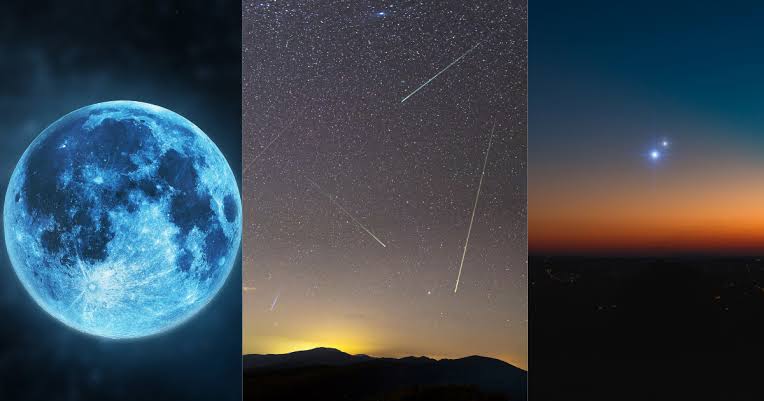Introduction
August is poised to be a celestial showcase as it brings forth two remarkable astronomy events that promise to bedazzle stargazers worldwide. Nature’s own fireworks display, the Perseid meteor shower, will grace the night sky, while a rare Blue Moon occurrence adds an extra touch of magic. In this article, we’ll explore these celestial phenomena in detail, providing you with all the information you need to witness these breathtaking events. So, prepare to be enchanted as we delve into the celestial wonders of August.
1. The Perseid Meteor Shower: A Celestial Spectacle
The Perseid meteor shower is an annual event that consistently ranks among the most anticipated meteor showers of the year. Known for its dazzling meteor trails, this cosmic display occurs when Earth passes through the debris left behind by the Comet Swift-Tuttle. As the tiny particles of comet dust collide with our atmosphere, they create brilliant streaks of light, commonly referred to as “shooting stars.”
2. When and Where to Watch – Meteor Shower

The Perseids typically peak in mid-August, and this year is no exception. The best time to witness this celestial spectacle is during the pre-dawn hours of August 11th to 13th. Find a dark, open area away from city lights, lie back, and enjoy the show. The meteor shower is visible from both the Northern and Southern Hemispheres, making it accessible to a global audience.
3. Blue Moon: A Rare Lunar Treat

In addition to the Perseid meteor shower, August will also treat us to a Blue Moon. But what exactly is a Blue Moon? Contrary to its name, it’s not about the moon turning blue. Instead, a Blue Moon refers to the second full moon occurring within a calendar month. It’s a relatively rare event, hence the phrase “once in a Blue Moon.”
4. The Science Behind the Blue Moon
The occurrence of a Blue Moon is a result of the moon’s orbital period and the length of our calendar months. A typical lunar cycle spans about 29.5 days, while our calendar months average 30 to 31 days. This discrepancy occasionally leads to the alignment of two full moons within a single calendar month, creating the phenomenon of the Blue Moon.
5. Witnessing the Blue Moon
The Blue Moon in August is scheduled to grace our night skies on August 31st. Just like any full moon, it will be visible to observers worldwide. Whether you’re a seasoned stargazer or simply appreciate the beauty of the moon, this event is a splendid opportunity to step outside and admire the celestial wonders above.
6. Tips for a Memorable Viewing Experience
To make the most of these astronomical events, consider these tips:
- Get Away from Light Pollution: Find a location far from urban light pollution for the best meteor shower experience.
- Patience is Key: Meteor showers can have lulls between bursts of activity, so give your eyes time to adjust and watch for a while.
- Bring Essentials: Carry snacks, blankets, and chairs for comfort during your stargazing adventure.
- Capture the Moment: If you have a camera with manual settings, try your hand at astrophotography to immortalize the beauty of the night sky.
Conclusion
August is set to be an extraordinary month for astronomy enthusiasts and anyone who gazes up at the night sky in wonder. The Perseid meteor shower will paint streaks of light across the canvas of the cosmos, while the Blue Moon adds a touch of lunar magic. These celestial events remind us of the captivating mysteries of the universe and offer a chance to connect with the grandeur of the cosmos.

